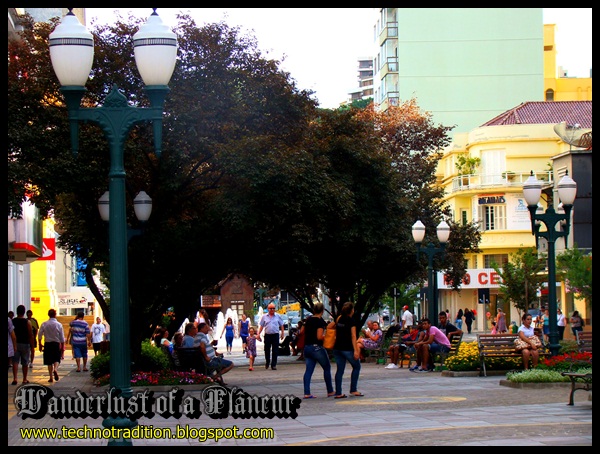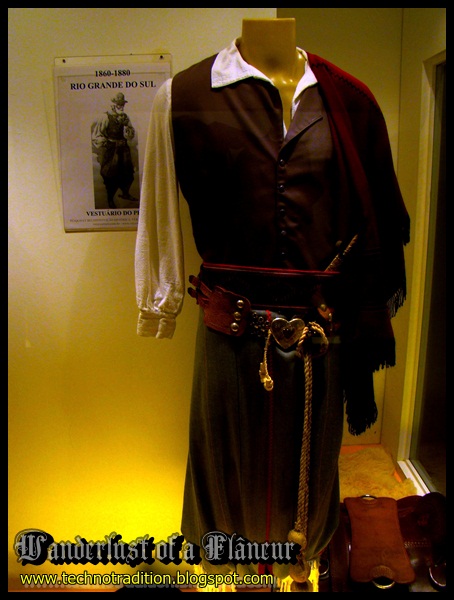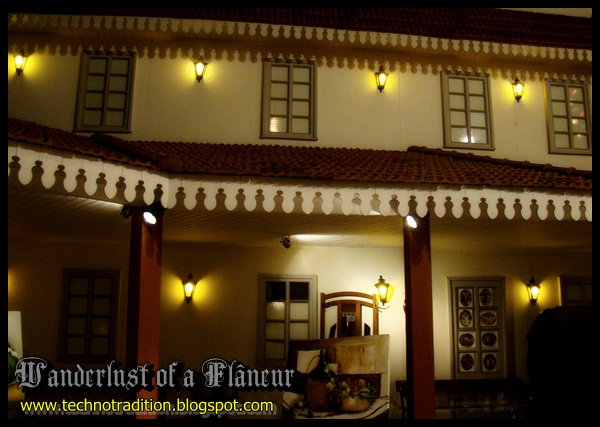The coat of arms of Bento Gonçalves was established on December 12, 1966, the Municipal Act 216. It is used in all official documents of the municipality. The coat recalls in its symbols and colours the industrial development of the municipality, the grape, the wine and the character of its people, expressed by the dynamism and organization.
City: Bento Gonçalves
State: Rio Grande do Sul
Country: Brazil
My Commentary: Bento Gonçalves has a very urban area but it also keeps its Italian and Gaúcho roots. Wineries are the main attraction but it's possible to visit historical buildings and places that are still there.
Links:
Interesting Facts:
- Bento Gonçalves is knows as "The Brazilian Capital of the Wine"
- The city's name was already Colônia de Dona Isabel but with the Farroupilha Revolution was attributed to it the name of Bento Gonçalves in a tribute to a key leader in the uprising against the Brazilian Empire (until 1870 the town's name was Cruzinha).
- Bento Gonçalves was settled by Italian immigrants
- Ernesto Geisel, a military president after the Revolution of 64 (a counterrevolion to the communist attempt to power), was born in Bento Gonçalves.
History of Bento Gonçalves: Before 1870, the area where the city is located was known as Cruzinha. It was inhabited, as the rest of the region, by Indians of the "jê" tribe. In 1875, the Brazilian government created, in the state of Rio Grande do Sul, four settlements to receive Italian immigrants. In the Cruzinha area, a settlement was created called Dona Isabel (named after the Brazilian princess Isabel de Bragança). "Dona Isabel" received the first 25 families of Italian settlers in that same year. They mostly came from the region of Trento. During the next few decades, the region was settled by immigrants coming mostly from the Italian regions of Veneto, Trentino, and Lombardia. In 1890, Dona Isabel was elevated to the category of city, changing its name to Bento Gonçalves (named after the military leader of the Ragamuffin War). The Italian immigrants mostly worked in grape and wine production. During the first few decades of the 20th century, the city continued to receive immigrants. Besides the Italians, there were large groups of Polish, German, Swedish, French, and Spanish immigrants.At that time, there were already some functioning wine factories and the furniture and metallurgic industry was just starting to take off. The railways arrived at the city in 1919, helping to connect it with the capital of the state, Porto Alegre, and facilitating the transport of the city's economic production. There were regular passenger trains running until 1976; however, today the railways are used mostly to transport goods. There is also a tourism railroad line that connects the city with Garibaldi and Carlos Barbosa using an old steam locomotive.The electric light distribution system was installed between 1919 and 1927. The Bartolomeu Tacchini Hospital was built during the same period.
In 1950, the population was 22,600. Industrial activity expanded, especially in the wine, furniture, leather, chemical, metal, and mechanical sectors. In 1967, the city organized the first National Wine Festival (Fenavinho), receiving, for the first time, a visit from a Brazilian President. The city started to organize and receive many important national and international events. It is now home to the second largest exposition park in Latin America. Among these events are the Movelsul (Furniture Fair), FIMMA Brasil (Furniture Machinery Fair), Vino Brasil (Wine Machinery Fair), Avaliação Nacional de Vinhos (National Wine Assessment), Fenavinho e Expobento (Commercial Fair). (Wikipedia)
Anthem of Bento Gonçalves:
The anthem of Bento Gonçalves is the result of a poem by Maria Frota and melody by Rui Barrros. It was first sung in 1967 during the First National Wine Festival - Fenavinho. The anthem was turned into official city symbol only in 1985.
Bento Gonçalves querida,
Bordada de parreirais,
Terra estuante de vida
Origem de nossos pais.
Bento Gonçalves querida,
Bordada de parreirais,
Onde o vinho borbulhante
Jorra jorra em cascatas reais
Salve esta terra fecunda,
Que a mão divina criou
E com trabalho e fé profunda
O imigrante desbravou
Bento Gonçalves querida,
Meu desejo é teu progresso
É ver-te de fronte erguida,
Altiva,
No tribunal do universo!
Nome de grande vulto,
Que o Rio Grande soube honrar,
Meu rincão é meu culto
Do Brasil é meu altar.
Uvas de várias castas,
Enriquecem a região,
Com teu doce vinho afastas
As mágoas do coração
A ti meu melhor carinho,
Linda Capital do Vinho.
Original Video by Sergio Pedrotti
My Photos in Bento Gonçalves - Trip 2014
São Bento Church
Fundação Casa das Artes
Methodist Church in Bento Gonçalves - A temple built in 1889
History of the Methodist Church in Bento Gonçalves
Methodist Church in Bento Gonçalves - Christian traditional symbols carved on the steps to the church
Via del Vino
Maria Fumaça
Bento Gonçalves Train Station
On the way with Maria Fumaça - Live Gaúcho music
My Photos in Bento Gonçalves - Trip 2014
My Commentary: I will sum it for now, after about 10 years without visiting our little house in Ilha Comprida, I finally went there with my family. Once there I had the ambitious idea of visiting my friends in the South of Brazil, since Ilha Comprida is in the South of São Paulo. At the end the plan worked better than I thought and I visited many places going by bus and then returning from the extreme South to my town by air plane. The list above follows the sequence of the route I did. It's possible to click in all the towns and get information and photos:
São Paulo
Paraná
Santa Catarina
Rio Grande do Sul
Here below there is a picture with some stuff I brought from all the places I visited.
My Photos in Bento Gonçalves - Trip 2014
My Commentary: One of my surprises when I first got to Rio Grande do Sul in 2014 was to see that the Italian culture is still there in many forms, mainly in the housing. I thought it would have already blended into the Gaúcho culture, but no, Italians towns are still Italian and the same happen to German towns which had German settlers. Bento Gonçalves is a very urban place but at the same time there are many cultural attractions and places to visit. I enjoyed a lot the locomotive tour together with the Italian museum.
Santo Antônio Parish. The inscription says "We did nothing without the help of God, but God didn't want to do anything without our hands".
A monument in tribute to the Farroupilha Revolution
A monument in tribute to the Farroupilha Revolution
The flags of Rio Grande do Sul and Bento Gonçalves
A historical building trying to survive in the middle of the terrible modern architecture
Art on a public wall
Monument to the Italian settlers in front of São Bento Church
Monument to the Italian settlers in front of São Bento Church
Mirela at São Bento Church
Flags of Rio Grande do Sul and Bento Gonçalves
Methodist Church in Bento Gonçalves - Christian traditional symbols carved on the steps to the church
Maria Fumaça / Trem do Vinho
Maria Fumaça is a Brazilian nickname for steam locomotive. The company Giordani Turismo operates the locomotive which passes through the towns of Bento Gonçalves, Carlos Barbosa and Garibaldi, which are typical locals of Italian settlers and knows by wineries. During the tour, people will enjoy live local folk music (Italian and Gaúcho music), see a play and also, at the end stop at Epopéia Italiana, which is a kind of museum and presentation about the Italian people's journey to the South of Brazil.
Bento Gonçalves Train Station: The old car of the Southern Brazilian Rio Grande do Sul Railway Company
On the way with Maria Fumaça
On the way with Maria Fumaça
On the way with Maria Fumaça
On the way with Maria Fumaça
On the way with Maria Fumaça - Garibaldi statue in the city of Garibaldi
On the way with Maria Fumaça
On the way with Maria Fumaça
Maria Fumaça - Live Italian music
Maria Fumaça - Live Italian music
On the way with Maria Fumaça
On the way with Maria Fumaça - Live Gaúcho music
On the way with Maria Fumaça - Live Gaúcho music
On the way with Maria Fumaça - A little comedy play
On the way with Maria Fumaça
On the way with Maria Fumaça
On the way with Maria Fumaça
On the way with Maria Fumaça - Live Gaúcho music
Parque Temático Epopéia Italiana
Epopéia Italiana is a theme park built to show the journey of the Italian immigrants to the South of Brazil. Inside there are nine replicas of real historical ambients that depict aspects of the life in Italy back then. It's also presented the trip to Brazil and the Italian's adaptation to the new continent.
Typical Gaucho clothes
Replica of an Italian ambient















































































































No comments:
Post a Comment